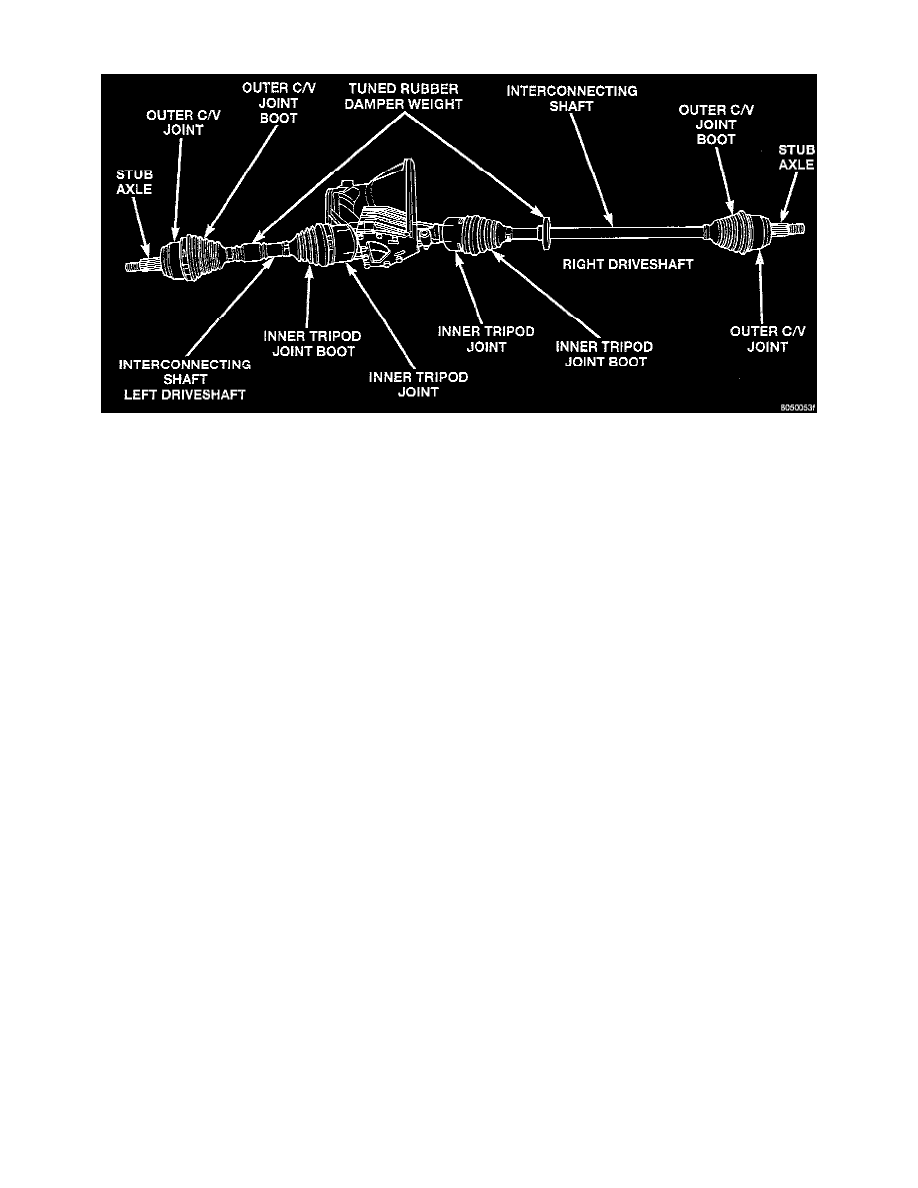Neon L4-2.0L VIN C (1997)

Axle Shaft: Description and Operation
Vehicles equipped with either an automatic or manual transmission use the unequal-length driveshaft system.
Vehicles equipped with automatic transaxles use a solid short interconnecting shaft on the left side. The right side of the vehicle uses a longer solid
interconnecting shaft.
Vehicles equipped with manual transaxles use a larger diameter (32 mm) short interconnecting shaft on the left side. The right side uses a longer
interconnecting damper.
Driveshafts used on both the right and left sides of the vehicle use a tuned rubber damper weight. The damper weight applications vary by which side of
the vehicle the driveshaft is located on and the transmission application of the vehicle. When replacing a driveshaft, be sure the replacement driveshaft
has the same damper weight as the original.
Both driveshaft assemblies use the same type of inner and outer joints. The inner joint of both driveshaft assemblies is a tripod joint, and the outer joint
of both driveshaft assemblies is a Rzeppa joint. Both tripod joints and Rzeppa joints are true constant velocity (C/V) joint assemblies. The inner tripod
joint allows for the changes in driveshaft length through the jounce and rebound travel of the front suspension.
On vehicles equipped with ABS brakes, the outer C/V joint is equipped with a tone wheel used to determine vehicle speed for ABS brake operation.
The inner tripod joint of both driveshafts is splined into the transaxle side gears. The inner tripod joints are retained in the side gears of the transaxle
using a snap ring located in the stub shaft of the tripod joint. The outer C/V joint has a stub shaft that is splined into the wheel hub and retained by a hub
nut using a nut lock and cotter pin.
NOTE: This vehicle does not use a rubber-lip bearing seal as on previous front-wheel-drive cars to prevent contamination of the front wheel bearing.
On these vehicles, the face of the outer C/V joint fits deeply into the steering knuckle, using a close outer C/V joint-to-steering knuckle fit. This design
deters direct water splash on bearing seal while allowing any water that gets in, to run out the bottom of the steering knuckle bearing bore. it is important
to thoroughly clean the outer C/V joint and the wheel bearing area in the steering knuckle before it is assembled after servicing.
